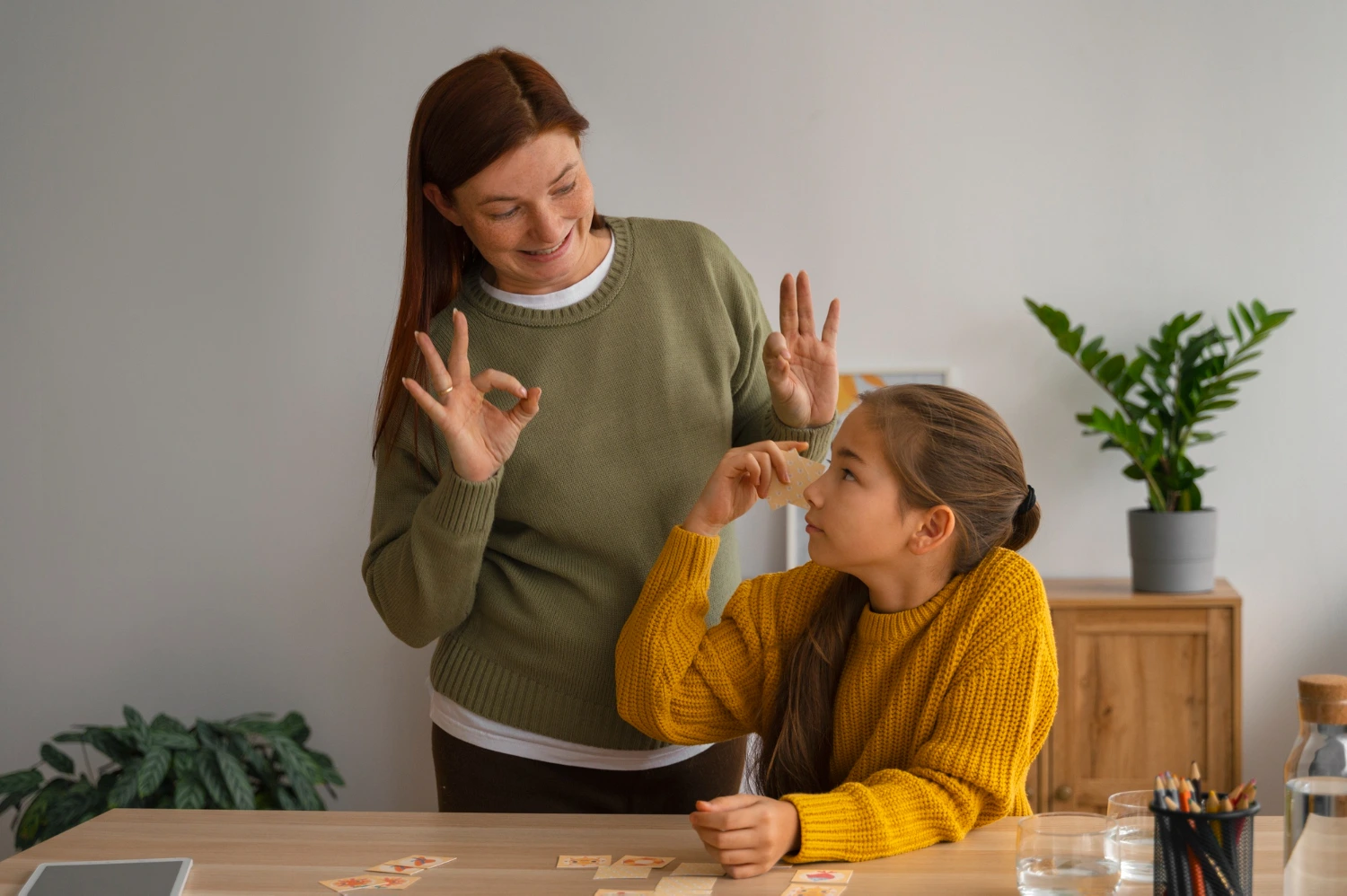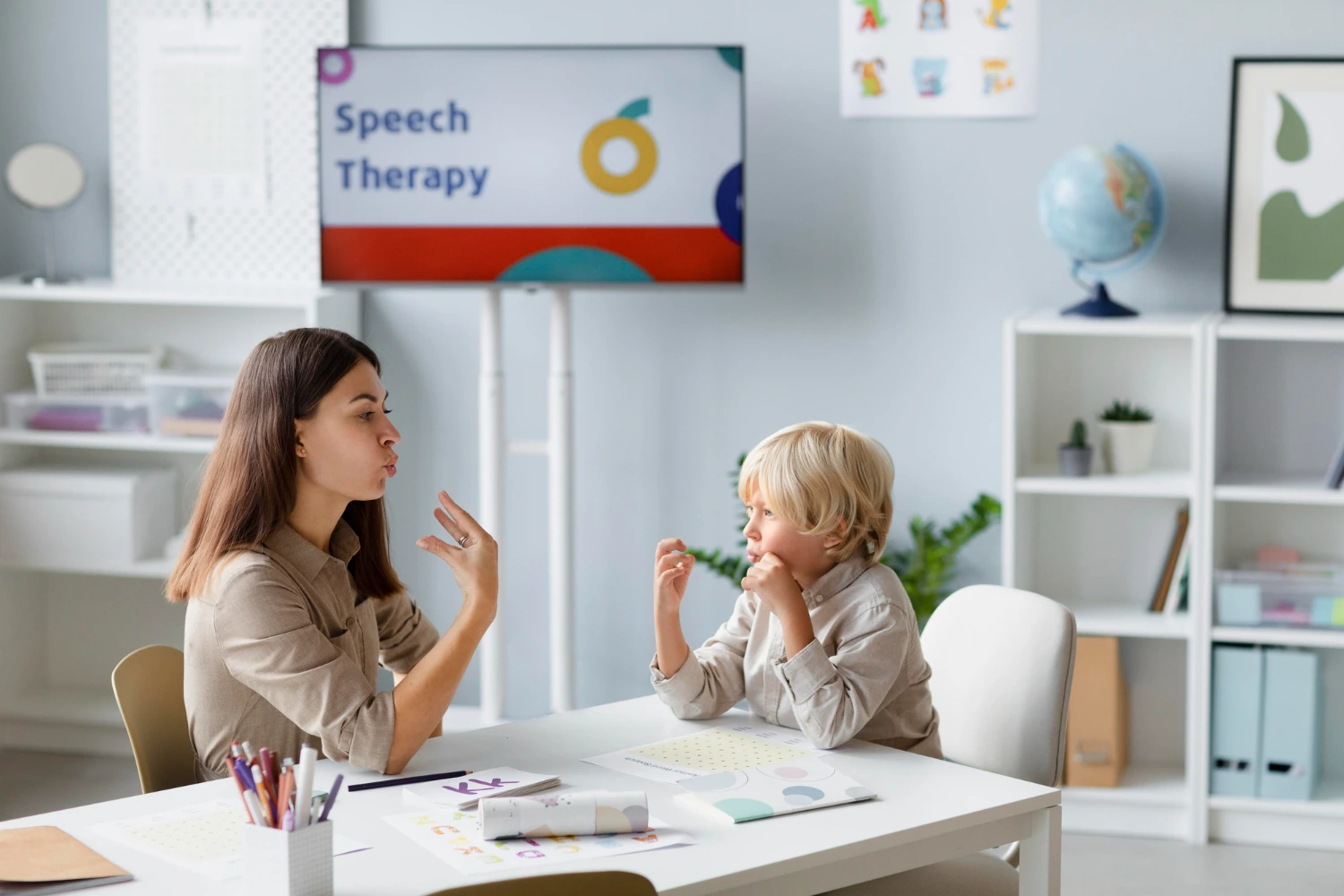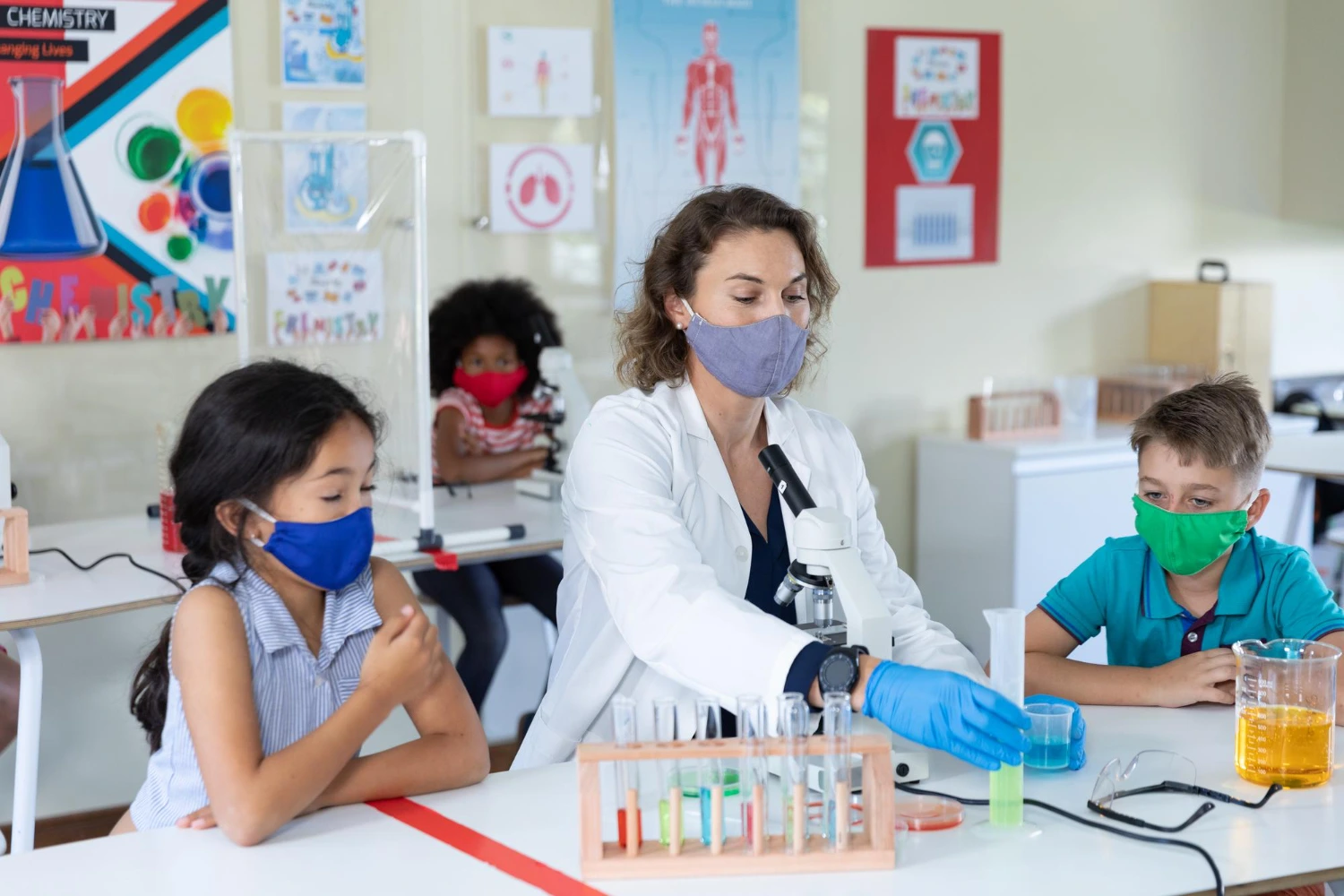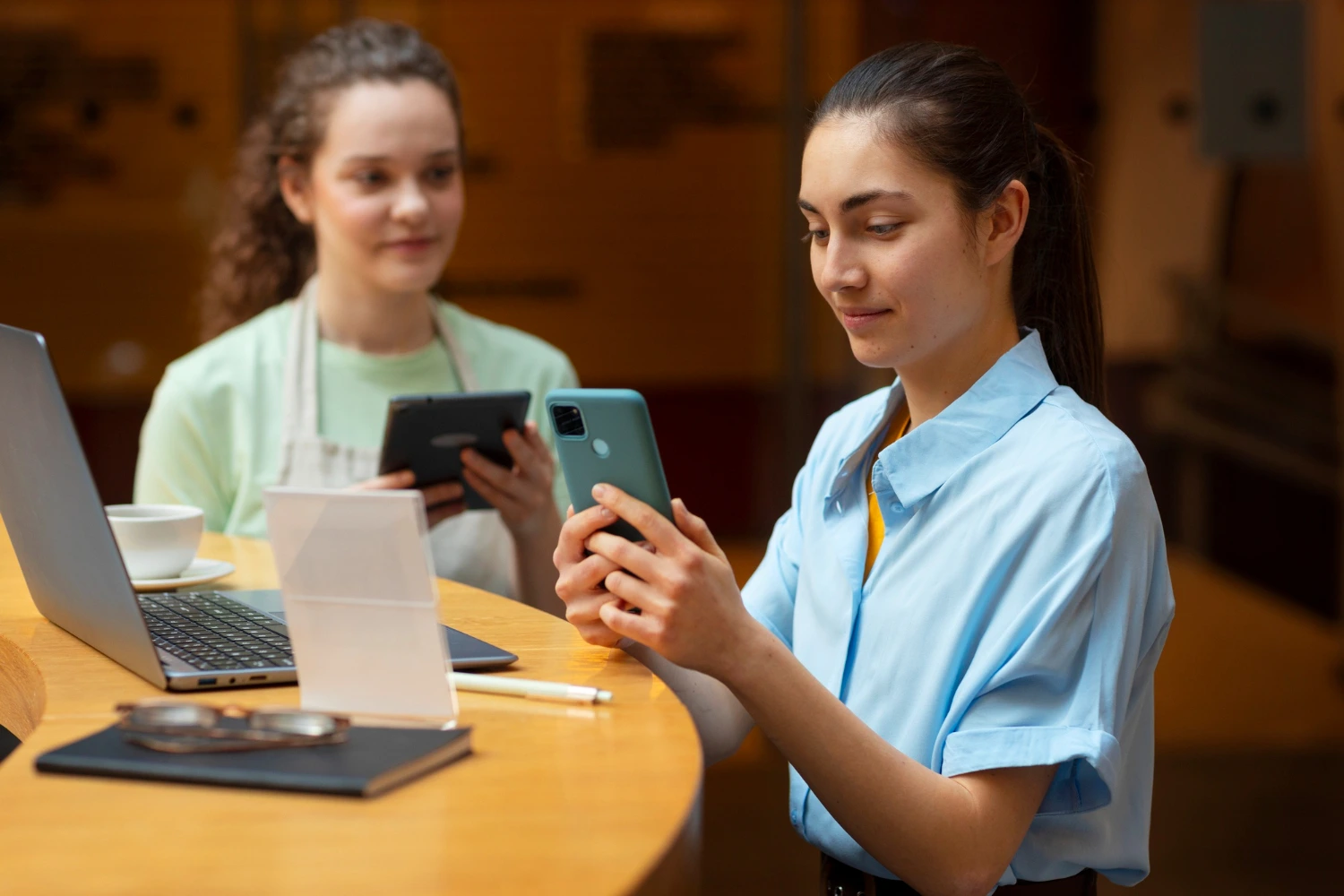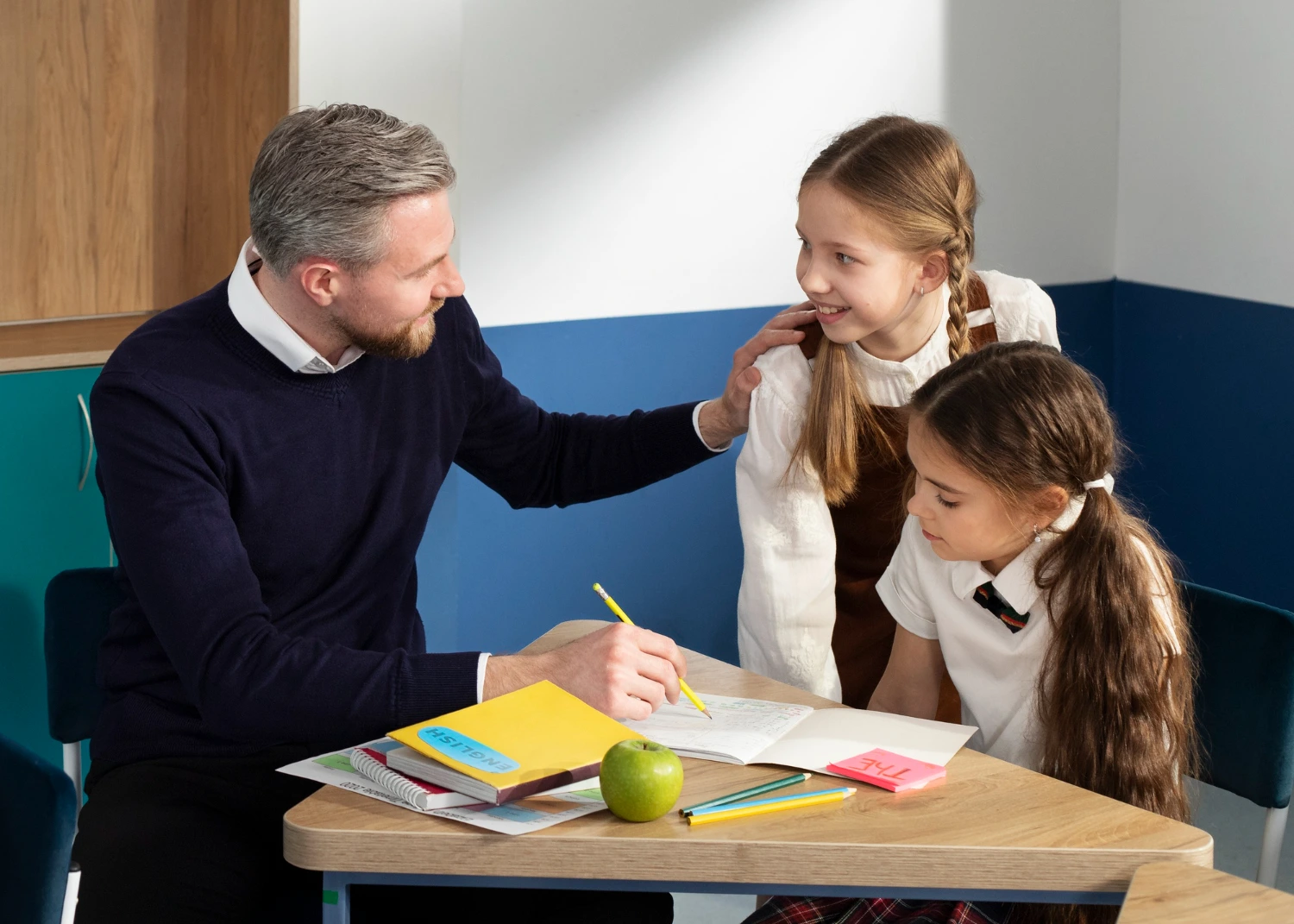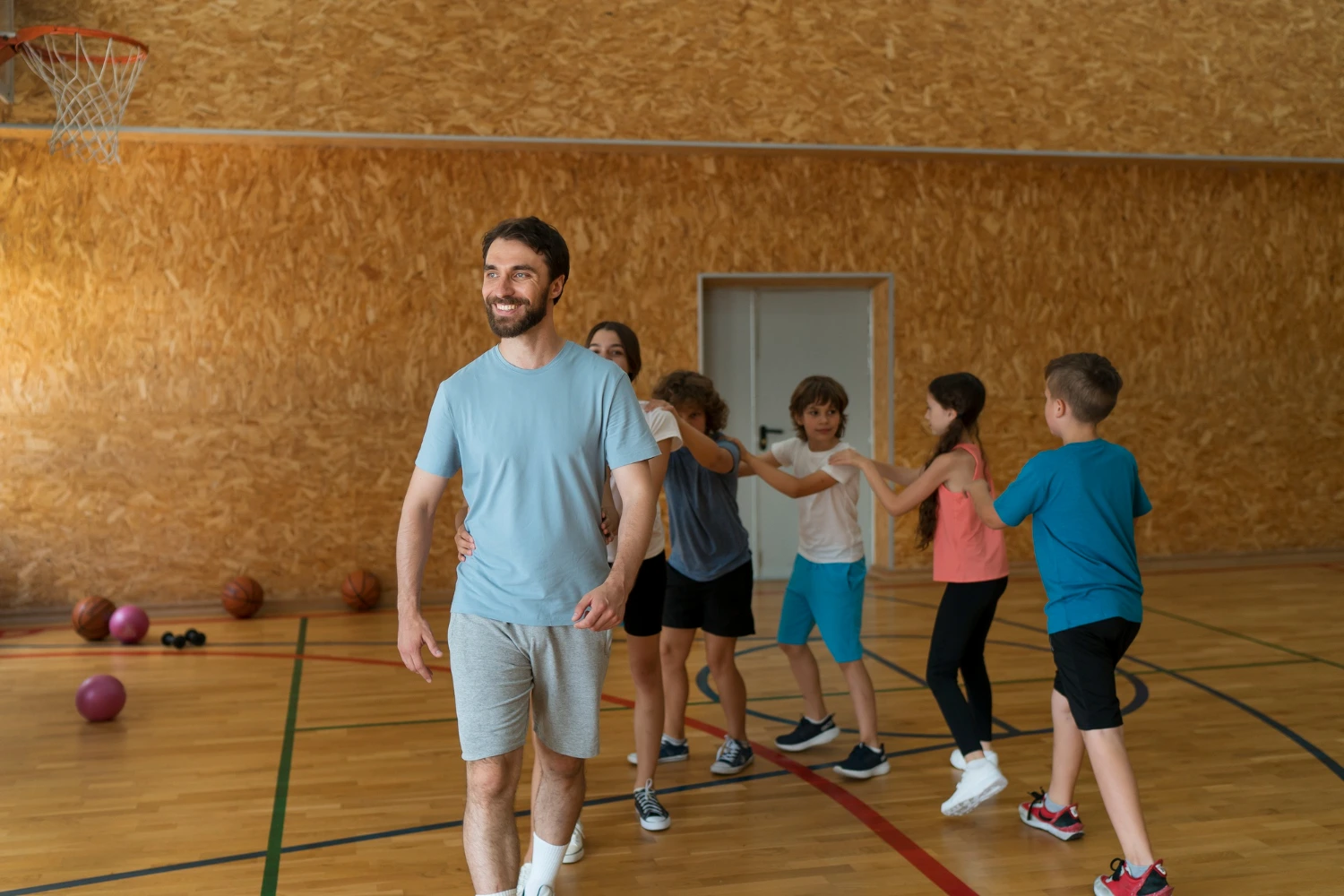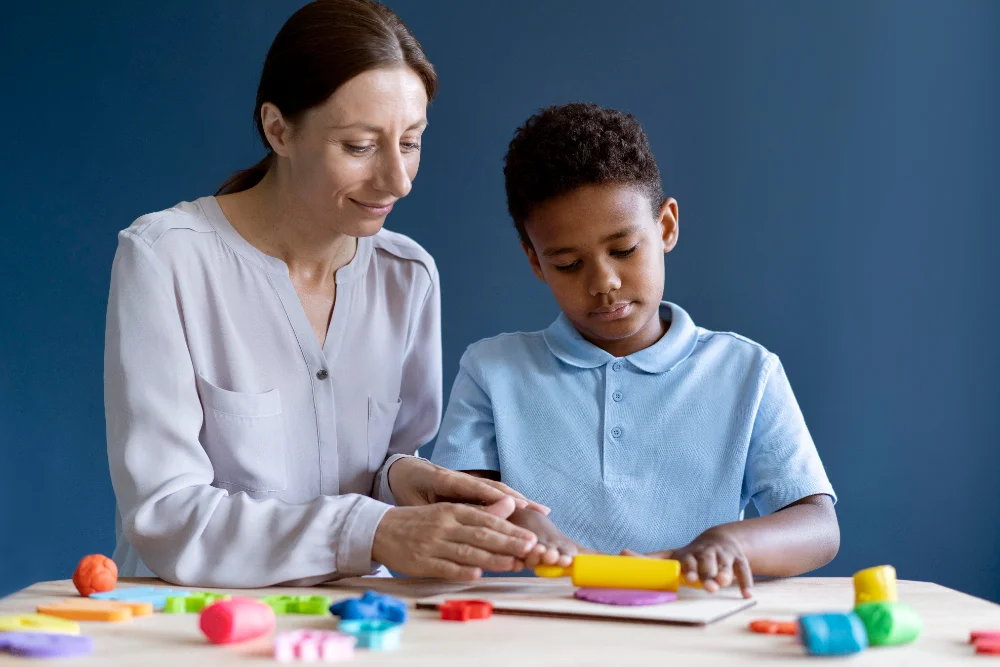
Choose Your Category
Opening Doors to Inclusive Careers: Explore a Spectrum of Job Categories Tailored for Every Special Individual's Potential
Recent Job Listing
From Education to Technology, Healthcare to Creative Arts, Find Meaningful Opportunities.

Every Special Child
Every Special Child (ESC) is a growing organization connecting schools with professionals in the field of education. We are dedicated to delivering excellence with unwavering expectations for each student’s achievement and success. Our team of devoted professionals wholeheartedly ensures the highest quality of services, fostering and upholding strong relationships with schools and professionals.
Each member of our team is thoroughly qualified, certified, and possesses extensive experience, collaborating closely with schools and qualified/certified school professionals.
Our Testimonials
Blogs & News

Challenges Faced by an LVN: Top 10 Struggles and Proven Ways to Overcome Them
Challenges Faced by an LVN: Top 10 Struggles and Proven Ways to Overcome Them Explore the top challenges faced by an LVN in the U.S. and learn practical solutions to overcome burnout, workload, pay gaps, and career limitations. Licensed Vocational Nurses (LVNs) are the backbone of the U.S. healthcare system—bridging the gap between patients, registered nurses, and physicians. While the role is deeply rewarding, the challenges faced by an LVN can be physically, emotionally, and mentally demanding. From long shifts to emotional burnout, understanding the most common challenges faced by an LVN—and how to overcome them—can help you build a sustainable, fulfilling nursing career. Apply Now. Challenge 1 – Heavy Workload and Long Hours The Reality of LVN Schedules One of the most common challenges faced by an LVN is managing a heavy workload. LVNs often juggle medication administration, patient monitoring, charting, and hands-on care—sometimes with limited staffing support. How to Manage This Challenge Prioritize tasks using checklists Delegate when appropriate Take short recovery breaks to prevent exhaustion Challenge 2 – Emotional Burnout Why Burnout Is a Major Challenge Faced by an LVN Providing constant care to sick, elderly, or terminally ill patients can lead to compassion fatigue and emotional exhaustion. Strategies to Overcome Emotional Burnout Practice consistent self-care Talk openly with coworkers or supervisors Set emotional boundaries while remaining compassionate Challenge 3 – Limited Career Advancement Career Plateaus for LVNs A frequent challenge faced by an LVN is limited upward mobility, especially in hospital environments where RN licensure is required for advancement. Read More Articles. Career Growth Solutions Enroll in LVN-to-RN or LVN-to-BSN bridge programs Pursue specialty certifications Seek leadership or mentoring roles Challenge 4 – Difficult Patients and Families Communication Barriers Managing emotional or uncooperative patients and families is another real-world challenge faced by an LVN, especially during high-stress situations. See More Effective Communication Techniques Practice active listening Respond with empathy and calm language Escalate concerns appropriately when needed Challenge 5 – Physical Demands of the Job Physical Strain and Injury Risks Among the most underestimated challenges faced by an LVN are physical fatigue, back injuries, and long hours spent standing or lifting patients. Prevention Tips Use proper body mechanics Wear supportive footwear Stretch before and after shifts Challenge 6 – Lower Pay Compared to RNs Understanding Wage Gaps Despite their essential role, pay disparity remains a major challenge faced by an LVN, particularly when compared to registered nurses. Ways to Increase Earnings Negotiate salary based on experience Earn specialized certifications Explore higher-paying work settings Challenge 7 – Lack of Recognition or Respect Feeling Undervalued Feeling overlooked is a common challenge faced by an LVN, especially in hierarchical healthcare environments. How to Build Professional Respect Be confident in your clinical skills Take initiative Strengthen teamwork relationships Challenge 8 – Keeping Up With Medical Technology Rapid Healthcare Advancements Adapting to EHR systems, telehealth platforms, and new medical tools is another evolving challenge faced by an LVN. Staying Technologically Current Attend training sessions Embrace new systems early Learn from tech-savvy colleagues Challenge 9 – Legal and Ethical Responsibilities Scope of Practice Concerns Understanding and staying within state-regulated duties is a serious challenge faced by an LVN, as mistakes can have legal consequences. How to Protect Yourself Document care thoroughly Ask questions before acting Prioritize patient safety and ethics Challenge 10 – Work-Life Balance The Impact of Shift Work Irregular schedules and night shifts remain one of the most personal challenges faced by an LVN, affecting sleep, relationships, and mental health. Maintaining Balance Schedule personal time intentionally Practice stress-reduction techniques Avoid excessive overtime FAQs: What is the biggest challenge faced by an LVN today? Heavy workloads combined with staffing shortages are the most common challenges. How can LVNs prevent burnout? By prioritizing self-care, setting boundaries, and seeking peer support. Can LVNs advance their careers? Yes. Many LVNs move into RN roles or specialized nursing fields through bridge programs. Are there higher-paying options despite the challenges faced by an LVN? Yes. Home health, correctional facilities, and specialty care often offer better pay. How can LVNs stay competitive in healthcare? Ongoing education, certifications, and adaptability to new technology are key. Final Takeaway The challenges faced by an LVN are real—but so are the rewards. From heavy workloads and emotional demands to career growth limitations, the role requires resilience and dedication. However, with the right strategies, a strong support system, continuous skill development, and intentional career planning, LVNs can successfully overcome these obstacles. More importantly, they can grow professionally, improve job satisfaction, and build long-term stability while continuing to make a meaningful, hands-on impact in U.S. healthcare every single day.
Published on Dec 19, 2025

A Day In The Life of a Licensed Vocational Nurse (LVN) in the U.S.
A Day In The Life of a Licensed Vocational Nurse (LVN) in the U.S. Ever wondered what a day in the life of a Licensed Vocational Nurse (LVN) really looks like in the United States? From early-morning patient rounds to detailed end-of-shift handoffs, the life of a Licensed Vocational Nurse (LVN) is fast-paced, hands-on, and deeply meaningful. This U.S.-focused guide offers a realistic look at daily LVN duties, work environments, challenges, and long-term career growth—helping you decide if becoming an LVN is the right healthcare career path for you. Apply Now. Why the Licensed Vocational Nurse (LVN) Role Matters in U.S. Healthcare Licensed Vocational Nurses are essential frontline caregivers across hospitals, clinics, long-term care facilities, and home health agencies throughout the U.S. Working under the supervision of Registered Nurses (RNs) and physicians, LVNs provide direct patient care that keeps healthcare systems functioning efficiently. Value Proposition: The LVN role offers a faster entry into nursing—often within 12–18 months—while delivering stable employment, strong demand nationwide, and meaningful patient interaction without the extended education timeline of advanced nursing roles. Understanding the Licensed Vocational Nurse (LVN) Role What Does a Licensed Vocational Nurse Do Daily? A core part of the day in the life of a Licensed Vocational Nurse (LVN) includes: Monitoring vital signs and patient conditions Administering medications (as permitted by state regulations) Performing wound care and treatments Updating Electronic Health Records (EHRs) Assisting patients with daily living activities LVN vs RN vs CNA: Key Differences CNA: Provides basic personal care and comfort LVN: Delivers clinical nursing care, medications, and patient monitoring RN: Develops care plans and performs advanced clinical procedures LVNs bridge the critical gap between CNAs and RNs, improving patient outcomes and care continuity. Read More Articles. A Typical Day in the Life of a Licensed Vocational Nurse (LVN) Starting the Shift: Early Mornings and Clinical Briefings Most LVNs begin their shifts between 6:00–7:00 AM. The day starts with a structured shift report covering patient updates, medication changes, and care priorities—an essential step for patient safety and continuity of care. Morning Responsibilities: The Busiest Part of an LVN Shift Mornings are the most task-intensive part of the LVN workday. Common responsibilities include: Reviewing patient charts and care plans Checking and recording vital signs Administering scheduled medications Documenting care in EHR systems Attention to detail and time management are critical during this phase of the LVN workday. Midday: Collaboration, Critical Thinking, and Patient Care Working With Registered Nurses and Physicians Throughout the day, LVNs communicate changes in patient condition to RNs and physicians, helping guide clinical decisions and treatment adjustments. Wound Care, IV Monitoring, and Ongoing AssessmentsHands-on care such as dressing changes, IV monitoring, and mobility assistance plays a major role in the daily life of a Licensed Vocational Nurse (LVN). Responding to Emergencies Patient falls, sudden vital sign changes, or unexpected complications require LVNs to act quickly, follow protocols, and escalate care appropriately. See More Afternoon Responsibilities: Education, Preparation, and Documentation Accurate Charting and Care Updates Proper documentation protects both patients and nursing licenses. LVNs log treatments, medication responses, and clinical observations with precision. Preparing Patients for Tests and Procedures LVNs help patients feel informed and at ease by clearly explaining upcoming procedures and addressing concerns. Educating Patients and Families Education is a critical LVN responsibility, including instruction on medication schedules, wound care, and discharge plans to support long-term recovery. End-of-Shift Duties in the Life of a Licensed Vocational Nurse (LVN) Shift Handoff and Reporting Clear, detailed handoff communication ensures incoming staff have accurate information to continue safe patient care. Final Patient Rounds and Safety Checks Before leaving, LVNs confirm patients are stable, comfortable, and safe. Documentation and Sign-Offs Completing all records accurately is a non-negotiable part of professional nursing practice. Physical and Emotional Challenges of Being an LVN The life of a Licensed Vocational Nurse (LVN) can be physically demanding and emotionally intense. Long shifts, standing for extended periods, and exposure to patient suffering are common. Strong teamwork, experience, and self-care strategies help prevent burnout. Rewards of a Career as a Licensed Vocational Nurse Despite the challenges, many LVNs find their work deeply fulfilling: Witnessing patient recovery Providing comfort during difficult moments Making a tangible difference every day Few healthcare roles offer such immediate and visible impact. Work-Life Balance for Licensed Vocational Nurses in the U.S. LVNs often benefit from flexible scheduling options, including full-time, part-time, and per diem roles. Establishing boundaries, prioritizing rest, and maintaining self-care routines are essential for long-term career sustainability. Skills That Make a Successful Licensed Vocational Nurse (LVN) Essential Hard and Soft Skills Strong communication and empathy Attention to detail Time management and organization Clinical competence Emotional resilience Technology in the Daily Life of a Licensed Vocational Nurse Modern LVNs routinely use: Electronic Health Records (EHRs) Automated medication dispensing systems Patient monitoring devices Technology improves efficiency, but critical thinking and human judgment remain irreplaceable. Career Advancement After Working as a Licensed Vocational Nurse Many LVNs use this role as a stepping stone for growth within nursing: LVN-to-RN bridge programs Specialty certifications (geriatrics, pediatrics, wound care) Leadership, training, or supervisory roles Sample Schedule: A Day in the Life of a Licensed Vocational Nurse (LVN) Time Task 6:30 AM Shift briefing 7:00 AM Vital signs & medication rounds 10:00 AM Patient care & charting 12:00 PM Lunch & RN coordination 2:00 PM Wound care & patient education 4:00 PM Documentation & reports 5:00 PM Final rounds & sign-off FAQs What does a Licensed Vocational Nurse do on a daily basis in the U.S.? LVNs provide direct patient care, administer medications, monitor vital signs, document treatments, and collaborate with RNs and physicians. What hours do LVNs typically work? Most LVNs work 8- or 12-hour shifts, including nights, weekends, and holidays, depending on the facility. Is being a Licensed Vocational Nurse physically demanding? Yes. The role involves standing, lifting, multitasking, and responding quickly to patient needs. Is the LVN role stressful? The job can be stressful, but strong teamwork, experience, and effective time management help reduce pressure. Is becoming an LVN a good long-term career in the U.S.? Absolutely. LVNs benefit from strong job demand, flexible work options, and multiple advancement pathways. Final Takeaway A day in the life of a Licensed Vocational Nurse (LVN) is busy, challenging, and deeply rewarding. For those seeking a hands-on, fast-entry nursing career in the U.S. with real patient impact and long-term stability, the LVN path offers an excellent opportunity.
Published on Dec 18, 2025

Licensed Vocational Nurse Salary 2026: U.S. Pay Trends And Top Paying States
Licensed Vocational Nurse Salary 2026: U.S. Pay Trends And Top Paying States Discover LVN Salary Trends in 2026 and What Licensed Vocational Nurses Earn Across the U.S. LVN salary in 2026 If you’re planning a career as a Licensed Vocational Nurse (LVN) or already working in the field, understanding LVN salary 2026 trends is essential for making informed career decisions. From entry-level wages to top-paying states and specialized roles, Licensed Vocational Nurse salary 2026 data reflects steady growth fueled by nationwide nursing shortages and an aging U.S. population. This guide breaks down LVN salaries by state, experience, education, and work setting, while also showing how to increase your earning potential in 2026 and beyond. Apply Now. Overview of LVN Salaries in 2026 In 2026, the average LVN salary in 2026 in the United States is estimated at $60,200 per year, or roughly $29 per hour. This represents a continued upward trend compared to previous years. Key Factors Driving LVN Salary Growth An aging population requiring long-term and chronic care Increased demand for cost-effective nursing professionals Ongoing RN shortages are expanding LVN responsibilities Expansion of outpatient, home health, and rehab services As healthcare systems adapt, LVN salary in 2026 are playing a larger role in patient care delivery—resulting in higher wages and strong job stability. Read More Articles. LVN Salary by Experience Level Entry-Level LVN Salary (0–2 Years) New LVNs typically earn between $45,000 and $52,000 annually, depending on state, employer type, and shift differentials. Mid-Level LVN Salary (3–7 Years) With experience, LVN salaries rise to $55,000–$65,000 per year, especially for nurses who take on expanded responsibilities or specialty tasks. Senior-Level LVN Salary (8+ Years) Experienced LVNs can earn $70,000–$85,000 annually, particularly in leadership, charge nurse, or specialized clinical roles. How Experience Impacts Pay Growth Beyond higher wages, experience opens doors to promotions, specialty assignments, and leadership roles that include bonuses and enhanced benefits. LVN Salary by Education and Certifications Standard LVN License vs. Advanced Certifications Holding advanced certifications can significantly increase your LVN salary in 2026. High-demand certifications include: IV Therapy Wound Care Gerontology Hospice & Palliative Care Each certification can add $3,000–$6,000 per year to your income. Continuing Education and Career Advancement LVNs who pursue LVN-to-RN or LVN-to-BSN programs often see salary increases of 20–30%, with many employers offering tuition reimbursement. LVN Salary by State in 2026 (U.S. Comparison) LVN salary varies widely by location due to cost of living, healthcare demand, union presence, and state funding. Highest-Paying States for LVN salary in 2026 California: $76,500 High demand, union support, and metropolitan pay premiums in cities like Los Angeles and San Francisco. Hawaii: $71,800 Strong healthcare demand and geographic staffing challenges. Washington: $69,200 Competitive wages in Seattle and the Puget Sound region. Massachusetts: $67,400 Dense healthcare infrastructure across Boston and surrounding cities. Oregon: $65,900 Growing healthcare needs in Portland and nearby metro areas. Lowest-Paying States for LVNs in 2026 Mississippi: $47,000 Arkansas: $48,500 West Virginia: $49,300 While salaries are lower, these states benefit from significantly reduced living costs. Regional LVN Salary Trends West Coast: Highest wages nationwide East Coast: Moderate-to-high pay with dense healthcare networks Midwest: Balanced pay-to-cost-of-living ratio Southern States: Lower base pay but strong affordability LVN Salary by Work Setting Hospitals & Clinics: ~$62,000 annually (higher with night shifts) Rehab and long-term care: about $58,000 a year with periodic overtime Home Health & Hospice: Flexible scheduling up to over $65,000 Government & Military Roles: $70,000+ with strong benefits Factors That Influence LVN Pay Geographic location and cost of living Shift differentials, overtime, and bonuses Union membership Employer size and facility type Specialty skills and certifications Future LVN Salary Outlook (2026 and Beyond) According to long-term employment projections, LVN salary in 2026 are expected to grow 6–8% through 2030. Advancements in telehealth, electronic health records, and remote patient monitoring may further expand LVN roles and pay opportunities. How to Increase Your LVN Salary Earn specialty certifications in high-demand areas Pursue LVN-to-RN or LVN-to-BSN bridge programs Take on leadership or charge nurse responsibilities Work flexible shifts or high-demand locations Negotiate pay using local salary benchmarks Real-Life LVN Salary Examples Maria (CA, 6 years): $72,000 in a hospital setting James (TX, 3 years): $58,000 in long-term care Elena (FL, 10 years): $68,000 in home health Frequently Asked Questions What is the average LVN salary in 2026? The average LVN salary in 2026 is approximately $60,200 per year, depending on experience and location. Which state pays Licensed Vocational Nurses the most? California offers the highest LVN salaries, averaging $76,500 annually. Does experience increase LVN salary significantly? Yes. LVNs with 8+ years of experience can earn $70,000–$85,000 per year. Do LVNs earn overtime pay? Yes. Over time, night shifts and weekend differentials can increase earnings by 10–20%. Is becoming an LVN a good career choice in 2026? Yes. The LVN career path offers job stability, competitive pay growth, and opportunities for advancement into RN roles. Data Sources & Salary Methodology Salary figures and projections in this guide are based on: U.S. Bureau of Labor Statistics (BLS) wage and employment data—See More State labor department reports Industry staffing trends and healthcare employer salary disclosures Aggregated compensation data from healthcare facilities nationwide Figures represent national averages and projections and may vary by employer, region, certifications, and economic conditions. Final Takeaway If you’re seeking a stable, well-paying healthcare career, LVN salary 2026 data shows strong earning potential and long-term growth. With the right location, experience, and certifications, Licensed Vocational Nurses can build rewarding and financially secure careers across the U.S.
Published on Dec 17, 2025




